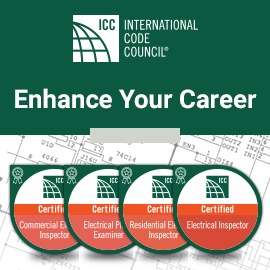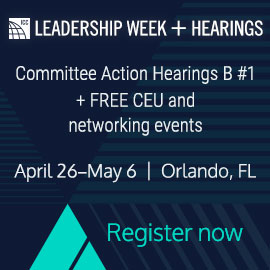
Highlighting the Latest International Plumbing Research from the Netherlands: Organic Kitchen Waste in the Sewers and Smart Water Networks
Here we spotlight the cutting-edge research being undertaken in the Netherlands with Dr Mirjam Blokker, Principal Scientist at KWR. KWR is an organization in the Netherlands that seeks to build bridges between science and practice at all levels to provide technical and social solutions.
As a global leader in the plumbing industry, the International Code Council has the privilege of collaborating with several international universities, academic institutions and research partners. With so many organizations making significant contributions to plumbing knowledge worldwide, staying updated with the latest research and academic findings can be challenging.
Through the Code Council’s Plumbing, Mechanical and Fuel Gas (PMG) Newsletter, we aim to spotlight these outstanding contributions from various regions, showcasing one country at a time.
Here we spotlight the cutting-edge research being undertaken in the Netherlands with Dr. Mirjam Blokker, Principal Scientist at KWR Water Research Institute (KWR). KWR is an organization in the Netherlands which seeks to build bridges between science and practice at to provide technical and social solutions.
In this edition, we share research in two fascinating areas:
- Organic kitchen waste within sanitary drainage systems, which is relevant to the development of the Code Council’s 825 Private Sewage Disposal Systems standard that deals with residential onsite wastewater treatment and disposal systems
- Smart water networks, which supports the need for the development of ICC 820, Standard for Water Supply and Sanitary Drainage System Performance Assessment and Data Extraction in the Built Environment
Organic Kitchen Waste in the Sewers
Within the framework of the circular economy, it is important for municipalities to make the best possible use of kitchen waste (fruit and vegetable waste, or ‘FVW’) through high-value, sustainable processing. In neighbourhoods with high-rise buildings this is practically impossible, because FVW is not collected separately. But the possibility does arise when the collection is done via wastewater.
This project has demonstrated that, from a technical perspective, there is no impediment to using food waste disposers for a more efficient recovery of resources from wastewater. And for high-rises the collection of FVW using this technique is the solution with the lowest environmental impact.
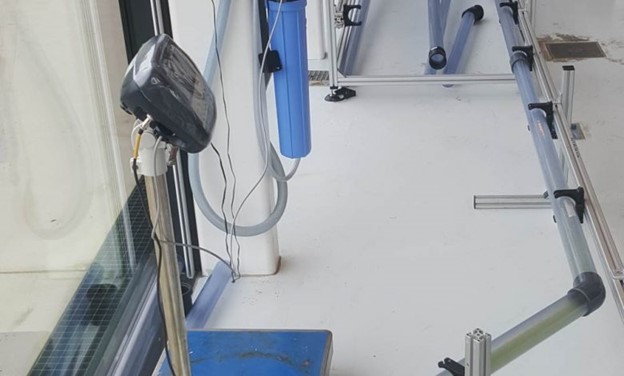
Improved Technology for Organic Kitchen Waste
For a more efficient recovery of resources from wastewater, the resource concentrations need to be increased. This can be done by adding more organic waste to the water and by reducing the amount of water. This is the so-called ‘new water cycle,’ after being processed by a food waste disposer, FVW ends up in the sewer. Together with concentrated toilet wastewater (‘black water’), it is then digested at a wastewater treatment plant (WWTP).
The objective of the OSKAR project – the name is the Dutch acronym for ‘organic kitchen waste via the sewer’ – was to study the possibility of using a food waste disposer in a home. This involved investigating several aspects, namely: technical (focused on the indoor sewer installations), governance (what is permitted under Dutch law) and sustainability (comparison with FVW collection through other routes). The user convenience aspect was not included.
The research examined whether the current indoor sewer installations are capable of transporting FVW processed by a disposer. Of course, this waste must not cause clogging or any other undesirable effects and problems, such as corrosion and/or cement rot caused by Hydrogen sulfide (H2S), or increased methane emissions. The effects of FVW on the sewer system and the WWTP have been studied, but research on the indoor sewer installations has lagged.
An experimental set-up was built in this project that included a food waste disposer, a sink and several configurations of indoor sewer installations (variations in slope, length, diameter, bends, horizontal and vertical pipes), and a wide variety of types of (mixed) foods. The laboratory experiments showed that there are no technical impediments to the use of food waste disposers. Nevertheless, it would be advisable to confirm this through a practical, long-term pilot study. The most important framework conditions are the application of sufficient slope and compliance with existing design installation guidelines.
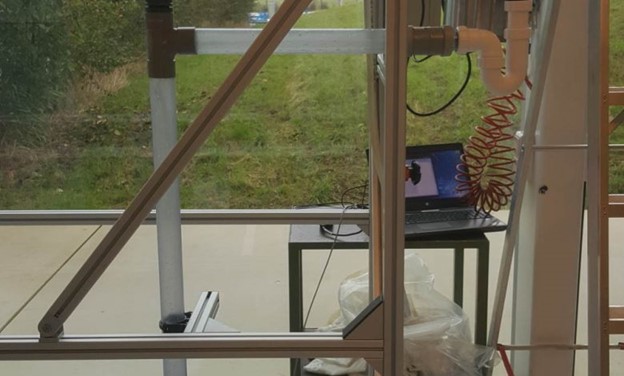
Organic Food Waste Challenge
The environmental impact was determined by comparing three different scenarios:
- The discharge of organic food waste into a kitchen and garden waste compost bin (KGW scenario)
- Discharge into residual waste (residual waste scenario)
- Discharge of food waste into the sewer system, after it is processed by a food waste disposer (sewer scenario)
The use of greener forms of energy is particularly beneficial in the sewer scenario. The environmental impact of this scenario can be decreased by reducing the household’s water consumption, and by decreasing the impact of the disposer itself. This impact can be decreased by processing more FVW per disposer – for example, if several households were to discharge their FVW via a common disposer – or through a significant extension of the disposer’s service life. In the case of high-rises, the discharge of FVW via the sewer is considerably better than it is via residual waste.
A Solution for Organic Kitchen Waste
An important obstacle to the discharge of FVW via a disposer is the current prohibition on their use in the Netherlands. Food waste disposers are deemed undesirable by the Ministry of Housing, Spatial Planning and the Environment because they ‘impose an additional load on the sewer system’. This is a reference to the possibility of increased clogging and to the fact that the processing of the effluent at the WWTP results in higher emissions.
The current legal framework does however offer the possibility of using FVW disposers. This relates to the exemption provided to municipalities for the introduction of alternative waste collection methods in specific areas. But for FVW disposers, this also includes the stipulation that the wastewater must be processed separately, outside of the WWTP. This means that a pilot can be carried out.
The successful implementation of a pilot is considered to be the most promising means of bringing about changes in today’s policy. Being able to demonstrate that the enriched wastewater from the FVW disposer constitutes no additional load for the WWTP plays a key role in this regard.
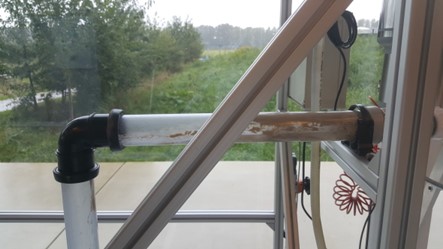
Smart Water Networks
A project within the Joint Research Programme of KWR and water utilities in the Netherlands focuses on the question of how a smart network – a combination of a variety of sensors with the right algorithms – can, in practice, lead to a more reliable, efficient and transparent drinking water requirements.
The project focuses on the application of data obtained from the sensors in the pilots and of other (freely available) data for the operational management of the distribution network. This will be done based on several pilots conducted at and with the water utilities.
The project will yield insight into smart water networks. For example:
- Sensor types
- Amount of sensors
- Their placement
- Frequency of their readings
It will also consider which extra data is needed to support the application, which data analysis methods are appropriate, and what this concretely offers a drinking water utility. The project will also ensure that the findings will be accessible in a pilot at one drinking water utility and made relevant for other drinking water utilities.
Pipe Network Nervous System
The distribution of drinking water through underground pipe networks is a largely unseen process. This makes the pipe network comparable to a hidden reactor, where many internal processes remain imprecisely understood. For example, water quantity may be affected by leaks or closed valves. Similarly, water quality can deteriorate due to various factors, such as contact with the pipe walls, the temperature of the surrounding soil, permeation of substances from the soil, leaching of materials from the pipes, pipe-wall biofilm, and other influences.
These can potentially have a negative impact for example on the water’s microbial safety, odour, taste or color. The water quantity or quality can also unintentionally be negatively affected during maintenance work on the network, such as repairs of pipe fractures or pipe cleaning. In such cases, the valve positions are not what they were thought to be, or a contamination may be introduced into the network.
In the current situation, the pipe network should, therefore, be considered a black box for the most part, and potential problems are challenging to resolve quickly and efficiently. The question this project is addressing is whether technology can help us make the pipe network into more of a ‘grey box’ or ‘white box’. This would enable the rapid detection of leakages, the quick identification of wrong valve positions, the limitation of excessively long water residence times, and the mitigation of water discoloration risk.
One refers to ‘smart networks’ in such cases. These are drinking water networks that are equipped with sensors (e.g., pressure, volume flow, electric conductivity, temperature), which allow a drinking water distribution utility to better monitor and manage the network regarding water quantity (e.g., flow, pressure), the condition of the pipes, or water quality.
The term can also refer to the use of algorithms to find defects, such as pipe fractures, or for advanced process management. It is as if a nervous system were added to the body of the infrastructure. Smart networks enable drinking water utilities to make ‘smarter’ use of the infrastructure without the networks themselves becoming smarter (Van Thienen and Blokker 2019).
This Joint Research Programme project, Waterwijs (water wise), addresses the question of how the combination of a variety of sensors, with associated algorithms, can in practice lead to a more reliable, efficient and transparent drinking water provision (Van den Broeke et al. 2019). The project focuses on the application of data obtained from the sensors in the pilots, and of other (freely available) data, for the operational management of the distribution network.
Pilots With Different Types of Sensors and Algorithms
The project will make use of various pilot areas of drinking water utilities with smart water meters, sensors and remotely controllable valves in the distribution network. Because not all possible sensors and algorithms can per pilot be studied at the same time, each pilot will produce answers to a portion of the questions.
Over a period of three years, six to eight pilots will be conducted, which will in total provide a broader perspective. Examples of pilots:
- How can smart technology assist in detecting anomalies (such as leakages) in the pipe network?
A leakage is detected by measuring the inflow volume (into the DMA) and comparing it with either the historical inflow or the outflow volume (water meters). This allows for a focus on the daily water consumption, the nightly water consumption, or the water consumption at specific times. - How can smart technology assist in locating anomalies (such as leakages and closed valves) in the pipe network?
A leakage or a closed valve can cause an anomaly in the water flow in the pipe network. This means that it should be possible to locate a leakage or a closed valve by using pressure meters and/or tracers in combination with water-quality sensors (e.g., EGV), and by comparing the results with historical data or with a calibrated (hydraulic + water quality) network model. In this context, it should be noted that some parameters can be seen as conservative tracers (EGV), and others as non-conservative tracers (e.g., temperature). It is, therefore, important to dispose of a good model that describes the change in the non-conservative tracer. The current approach to leakage location uses volume-flow and pressure sensors; in this pilot, we examine how other sensors can improve the localization. - How can smart technology assist in managing water-quality incidents?
When a water contamination is detected, the response is to issue a boil-water advisory to customers, trace and eliminate the contamination source, and isolate and remove the contaminated water. Contamination detection is a research project in and of itself, as is the response strategy, in which the effectiveness of the response depends in part on how quickly the contamination is detected and located. For the detection and source tracing, one can research whether the combination of information received from several types of sensors or from sensors in two (or more) different network layouts (to be realized by using valves), result in a better detection or localization of the source. This can be tested by dosing of a tracer and measuring EGV and turbidity or pH; there is no need to carry out a real contamination. In the response strategy, one option is to use valves and fire hydrants to direct the water; it is also important to monitor whether all the contaminated water is in fact removed.
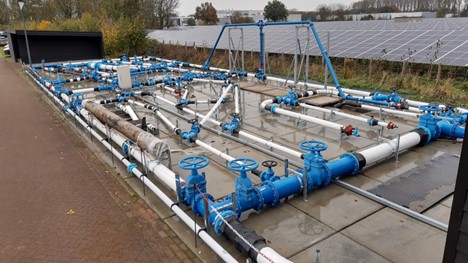
Smart Networks for an Efficient Drinking Water System and Good Water Quality
The objective of this Joint Research Programme project is to study in practice how extra sensors and data analysis can contribute to a greater understanding of the (hydraulic and water-quality) processes in the distribution network, so that the drinking water provision can be delivered as efficiently and with as little quality loss as possible.
The project will also ensure that the findings will be accessible in a pilot at one drinking water utility and made relevant for other drinking water utilities. This will enable the drinking water utilities to further shape Smart Water Networks (outcome), which will lead to a better service and lower costs for the drinking water customer (impact).
To access the Code Council’s PMG-related resources, click here. To subscribe to the PMG newsletter, click here.






